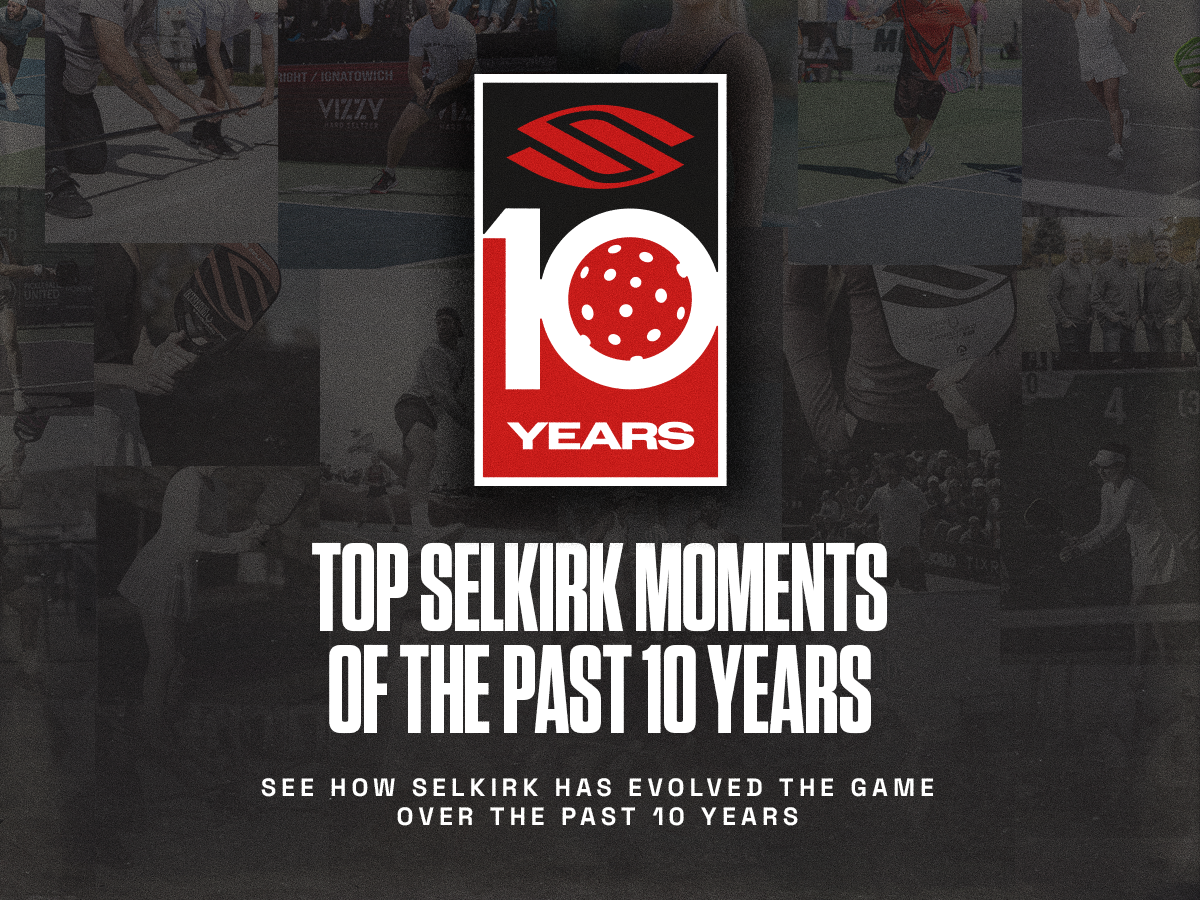By: Christopher Amidzich
One of the items that comes up a lot, relative to each player’s pickleball proficiency, is their player rating. If you are a regular player, this is something you want to know with some degree of accuracy. It will be the determining factor in ensuring you are playing against comparable competition in open and tournament play. Playing against those who are significantly more or less skilled will affect everyone’s enjoyment; therefore, this is something you want to try and assess with relative accuracy.
Without getting too far into the weeds, everyone should know some basics about player rating systems. First, there are generally two types of rating systems, a two and a four-digit system. Both rating systems start at 1.0 (complete beginner) to 5.5+ (Tour Professional). They differ in that the four-digit system goes to three decimal places and considers skills and match outcomes. A two-digit system goes to one decimal and only considers the skills of the player and not the outcomes of their matches. For purposes of this article, we will use the two-digit system to help you analyze your game. Further, Definitions and Skill Assessment Sheets, opens in a new tab are available for review by USA Pickleball. These assessment sheets are a great checklist tool that can help you understand where you should slot your personal level among all players. Keep in mind, this is usually a self-assessment. It is acceptable to self-assess but be honest with yourself, and a perfect checklist is not the goal to necessarily move yourself to that next level. To help you have full awareness, let’s dig into some of the skills and how they differ between players rating themselves 3.0-5.0. You will notice within these explanations that the differences are both subtle, yet significant.
General Shots – Forehand, Backhand & Serve/Return
As a 3.0 player, the forehand would be the preferred shot with the ability to hit it at a medium pace. The backhand? Forget about it. 3.0 players won’t even attempt it. They will run around their backhand to hit a forehand almost every time. As you move towards 5.0, players will gain improved accuracy, overall control, and pace variation with the forehand being the main weapon. Between 3.0-5.0, you are going to see backhand development, until the forehand and backhand are essentially equally as effective. When the forehand and backhand are equally consistent weapons in your arsenal, then you are probably in that 5.0 territory for this particular shot. However, this is more than just a good shot, at 5.0. It must be a great shot from both sides!
A similar phenomenon occurs with serves and return of serves. At the 3.0 level, you will see players able to serve and return, but will be inconsistent with their depth, direction, and overall consistency. With time, a player, little by little, will begin to improve in these three areas. At the 3.5 level, players will consistently get the ball in play, but will lack depth and direction on the serve and/or return. Getting to 4.0, we see a high number of successful shots with variation in depth and speed. Once to 4.5-5.0, we are now looking at consistently high accuracy, with a lot of control, including adding spin to the serve or return of serve.
Specialty Shots – Dinks, Drops, and Volleys
Let’s look at some of the differences in the specialty shots. Early in a player’s development, one will see that they are able to do some dinking, but rallies will be short in duration. Third shots will be a simple, over the net medium paced shots, and volleys will be more defensive and lack regular success. Fairly early, it will be expected that even by the 3.5 rating, players should be understanding and attempting regular drops, with varying success, and sustaining more medium length dink rallies. By the 4.0 level, again, you will see the rating system emphasize mastery of these shots. The expectation is that at the 4.0 level a player will be able to hit and respond to shots, like volleys, of varying speeds. Improved consistency will be a key, and new items, like acknowledging patience during dinking rallies will be a component to consider yourself a rising 4.0 player. Moving to 4.5+, we’re talking about the ability to intentionally place the ball during these specialty shots using variation and direction, pace, and shot selection type. You should be able to be frustratingly dangerous to your opponents with these shots once you get to 5.0. That means third shot drops that give your opponent no choice but to dink, and once dinking you patiently wait them out, hitting just the right dink, until they make an error, and you pounce. After pouncing, maybe you find yourself in a hand volley battle, but you often come out ahead by controlling your volley placement.
Strategy
Often, when players think about their rating, they think of technical execution of each shot type. What they do not consider, but is an important part of their overall rating, is strategy. What do we mean when we say strategy? We are talking about knowing proper shot selection, given the position on the court, the score of the game, and their opponent’s position on the court, strengths and weaknesses. There is also an expectation that you are thinking about what you want to do before you do it. You are moving beyond simply being satisfied with keeping the ball in play. Rather, you are being intentional with a plan of action to keep your opponent guessing and capitalizing on the opportunities each opponent presents you. Think of playing chess, not checkers. The thing that makes pickleball so special is that strategy can overcome a lot of brawn.
Initially, at a 3.0 level, it is good enough to know the fundamental rules and how to keep score, in addition to things like court positioning. Over time, from a strategic perspective, the rating system is going to slowly build upon a strategic foundation. There will be an expectation to understand the difference between the use and timing of a hard vs. a soft game, meaning hard hit vs. gently placed shots. Control of the non-volley zone and game techniques like stacking are understood and then eventually implemented. Partner and opponent positions on the court will be woven into each point before the point is played. Proper strategy will be unscored by fewer and fewer unforced errors, and match victories against players that are rating themselves 4.0 and above.
Summary
Take the time to think about and understand your current skills as a package. It is important for many things, but most of all it will help you identify your game’s strengths and opportunity to focus your improvement. Pick one thing at a time and work to get better. Doing this will improve your game, outcomes, and eventually your rating. Also, don’t be afraid to play up a 0.5 level and play those that are rating a half level higher. In pushing yourself, you will feel more confident about your rating and experience firsthand where you need to get better. This way, when you eventually have success playing a stronger opponent, it will feel great!
Selkirk TV has HUNDREDS of videos dedicated to teaching pickleball to all skill levels. Learn from Tyson McGuffin, Mark Renneson, Susannah Barr, and more by subscribing to the Selkirk TV Youtube Channel!
























































